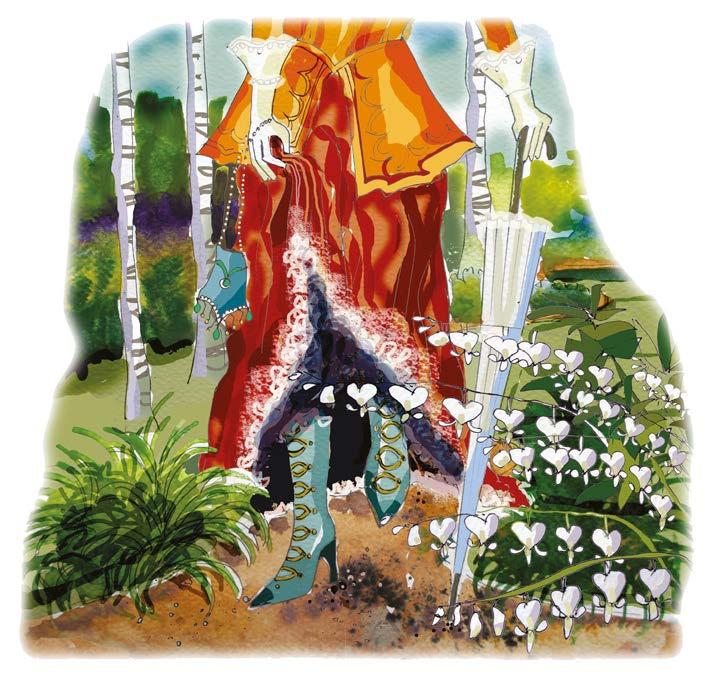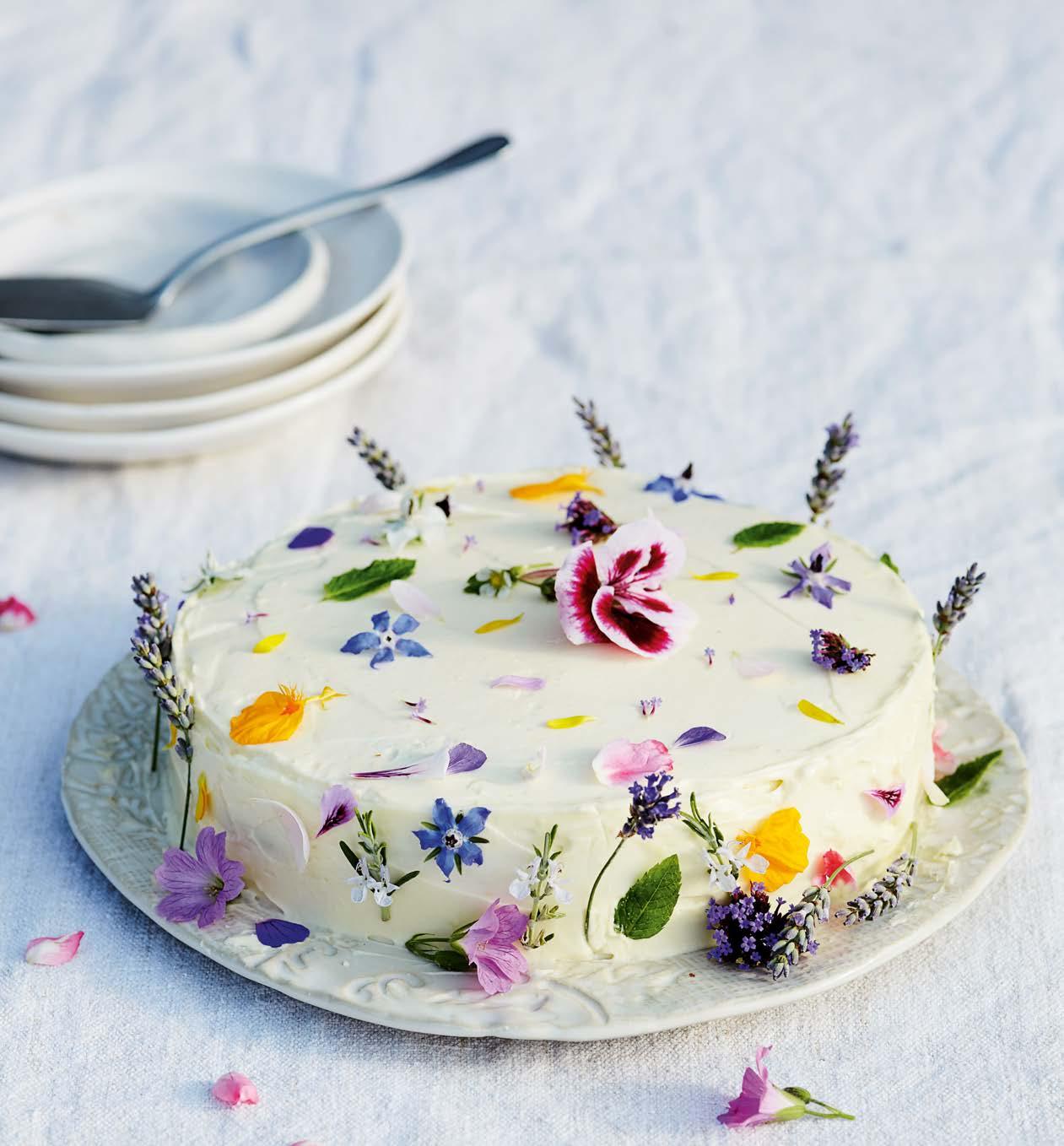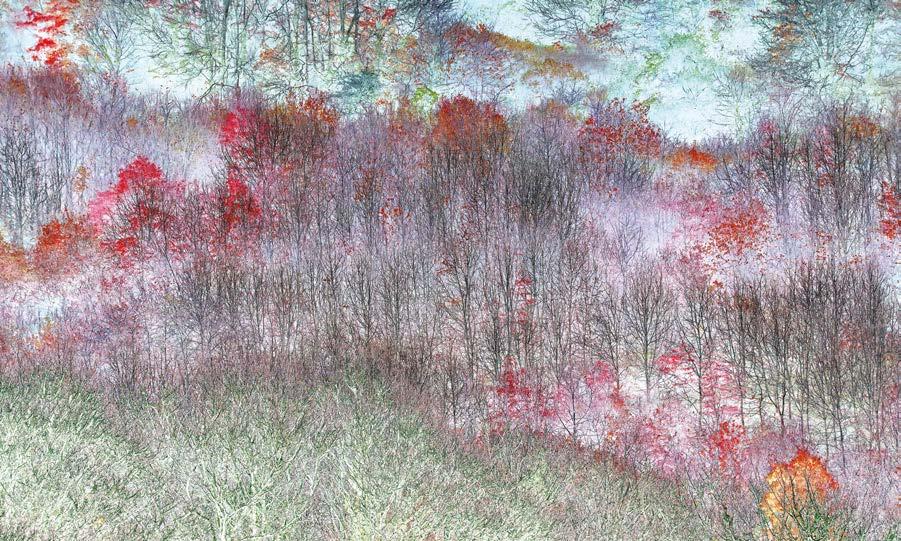
22 minute read
IGPOTY This annual competition seeks
Abstract Views Claire Ogden
Magical Trees
Roseland Peninsula, Cornwall, England, UK
“I was looking for colour but few leaves remained on this hillside of trees in late autumn. Using software, I inverted and then altered the colours further to create this magical, abstract treescape.”
Beautiful Gardens Nigel McCall
Indian Summer Morning
Aberglasney Gardens, Carmarthenshire, Wales, UK
“The Upper Walled Garden is an inspiring place to photograph at virtually any time of year. It was now late October and the cool and sometimes frosty nights were being followed by warm, bright and calm days. Mist filled the valley and the morning sun began to highlight the scene; the conditions were perfect to photograph an ‘Indian summer’ morning.”


Wildlife in the Garden Petar Sabol
Survivor
Goričan, Međimurje County, Croatia
“Beauty can be found in the imperfect, damaged wings of this male dragonfly – Sympetrum striolatum (common darter). I discovered this specimen close to the pond in my garden. It was morning when beads of dew were still to be seen and I waited for the perfect alignment to complete the composition.”
Greening the City Richard Bloom
Valencia Parque Central
Valencia, Spain
“Valencia Parque Central was implemented by lead landscape designers Gustafson Porter + Bowman. Phase 1 was completed in 2019, following the relocation of high-speed trains below ground. It is one of the city’s most significant redevelopments at a total site cost of €73 million.”


Trees, Woods & Forests Gianluca Gianferrari
Flooding Birches
Guastalla, Emilia-Romagna, Italy
“Sometimes nature reminds us of her power, but even then gives us beauty. The Po River flooded and created a striking scene, ready to photograph, of these beautiful Betula pendula (silver birch) trees.”
Wildflower Landscapes Simon Lea
Poppy Coven
Coven, West Midlands, England, UK
“I captured this photo at a then secret location in the West Midlands at sunrise – the town nearest to the field is called Coven. As with all sunrise photos, you have to get up extremely early, especially when you are travelling 30 minutes from your home to be there. The reward is a photo that is unique to you, because no one else is there capturing the same magical moment as the sun hits the first poppies.”
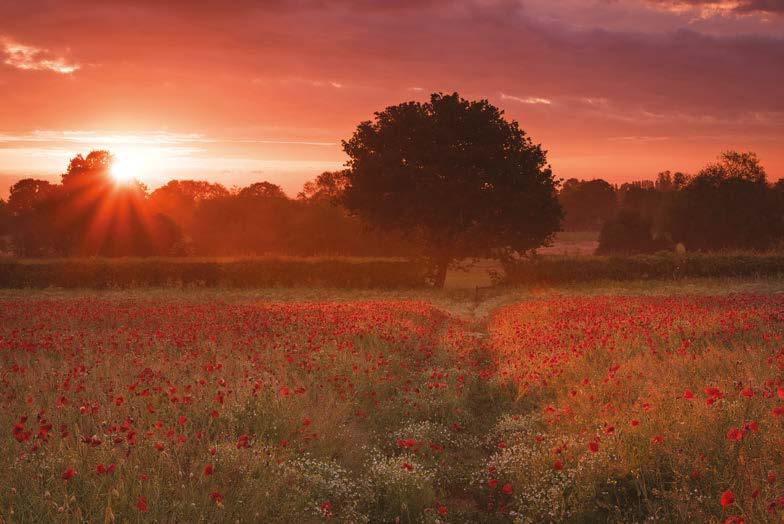
Plants & Planet Jonathan Barran
Tolaga Bay
Tolaga Bay, North Island, New Zealand
“A series of intense storms due to climate change have brought down thousands of tons of wood from forestry plantations in the flooded rivers behind Tolaga Bay. The rivers have spilled their cargo of wood onto the beach, destroying the sand dunes and plants in the wake.”


Breathing Spaces Luka Esenko
Land of the Waterfalls
Plitvice Lakes National Park, Plitvička Jezera, Croatia
“I visited the UNESCO World Heritage Site of Plitvice to capture the stunning winter scenery and woodlands with one of the many impressive waterfalls in the park.”
The Royal Photographic Society Gold Medal –Portfolios David Townshend
Hosta Patterns
Northamptonshire, England, UK
“There are always images waiting to be created, even early on a wet June morning. Pots of hosta, heuchera and libertia on my patio, each with their own distinctive leaf shape, texture and colour, were transformed as rain droplets collected on them with the gloom accentuating their colour. Moving my camera during the sequence of exposures, I captured their transient beauty as unique patterns that are at the same time bold and intricate.”


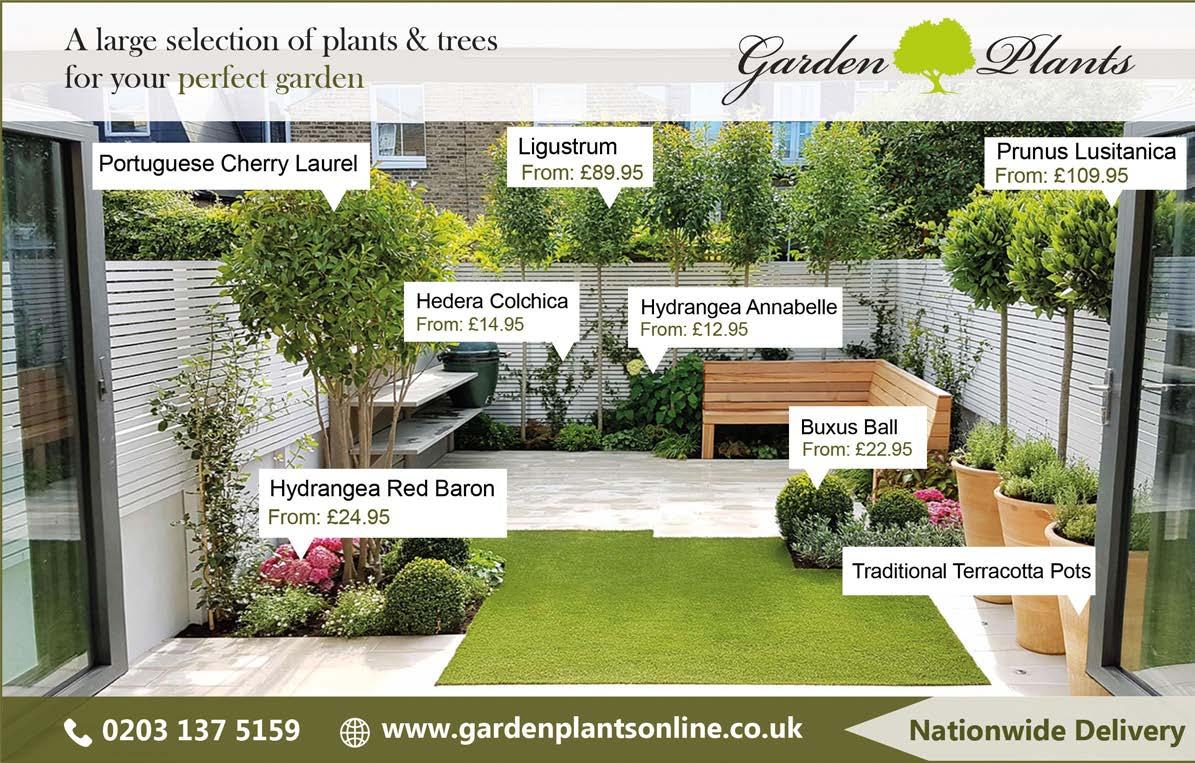
The Reviewer
A selection of the best writing on the shelves this month

The Flower Yard
by Arthur Parkinson Kyle Books, £22
There isn’t much that is low-key about Arthur Parkinson’s planting choices, but that’s the point. The young Kew alumnus and sometime Sarah Raven protégé is a popular figure on Instagram, and in this, his second book, he tackles a problem facing many gardeners of his generation. That is, how best to grow a garden with limited means in a property that is not your own. For Parkinson, the solution is to develop a container garden and to do so with unwavering spirit. “There seems to be an abhorrent idea that beauty is something you can only aspire to or achieve in a grand house or in a large garden. But beauty doesn’t bow to this…” he writes.
Glamorous, jewel-toned tulips, flamboyant dahlias and scented sweet peas feature strongly in this work, which is part containergarden handbook and part autobiography, but there is much more besides. Find how-to guides on layering bulbs, lasagne style, for prolonged displays, or sowing into a seed tray, as well as thoughts on florals by fabric house Osborne & Little.
While Arthur has both written and provided the photography for this work, it is through the talented arrangements of colour and form pictured here that his skills truly shine.
The Healing Power of Flowers
by Claire Bowen and Eva Nemeth Ebury, £12.99
Floriography, the language of flowers, was popular among the Victorians but has enjoyed renewed attention over the past few years. While it is now rare to send someone specific flowers to convey a particular message, we still rely on certain blooms to communicate what words cannot: spring bulbs for hope, lilies for sorrow.
Florist Claire Bowen, of Honeysuckle and Hilda, and photographer Eva Nemeth draw on the energy flowers present, in addition to the meanings of old. Hellebores, for example, once represented lies and scandal, but could also be associated with longevity and constancy due to winter tenacity. Chapters are grouped by emotion, so there are flowers for consolation, celebration, joy and calm. There are also instructions on caring for flowers and techniques for making a meaningful bouquet. Discovering Dahlias
by Erin Benzakein and Chris Benzakein Chronicle Books, £18.99
Erin and Chris Benzakein own Floret Farm, a family-run flower and seed company in the Skagit Valley, Washington State, specialising in unique, uncommon and heirloom blooms. Here, with colleagues Jill Jorgensen and Julie Chai, they present a guide to growing dahlias. What began with a load of tubers gifted to them by a friend is now a collection of some 800 varieties and 18,000 plants, so there is plenty of knowledge to share.
The full extent of dahlia care is neatly explained, with illustrated topics including propagation, hybridisation and winter storage, but this is balanced with the romance of this compelling flower. The maritime climate of the Skagit Valley is not dissimilar to the climate we enjoy here in the UK, so there is plenty for British readers to take from this work. This book is a feast for passionate dahlia lovers.
Q&A
A professor of biology specialising in bumblebee conservation, Dave Goulson explains how we can help these beleaguered insects in his new book, Gardening for Bumblebees

How many bee species are there in the UK and of these, how many are bumblebees?
Many people are surprised to hear that there are more than 20,000 species of bee in the world, with over 270 in the UK. Of these, 26 are bumblebees, which are fairly easy to spot, being large and furry, although with tremendous variation in their patterns of yellow, white, black, red and brown stripes.
Unlike many species of bee, bumblebees are broadly sociable. What is their life cycle?
Bumblebee queens emerge from hibernation from late February and fatten up on spring flowers such as pussy willow before looking for a nest site, usually underground in an old rodent burrow. They rear daughter workers to start with, which take over foraging for food, and by late spring the nest will have grown to several hundred workers. Males and new queens are then produced, which fly from the nest in summer and mate. The young queens burrow underground to begin hibernation. The old queen, workers and males all die at the end of summer.
What are some of the things that you find most compelling about bumblebees?
Bumblebees seem endearingly clumsy, but in fact they are remarkably clever; I spent many years studying their impressive navigational abilities – they are able to find their way back to their nest when released up to six miles from home. They also use many tricks to sniff out the most rewarding flowers, including avoiding flowers bearing the smelly footprint of previous bee visitors. Bumblebees are hugely important as pollinators; without them many wildflowers would disappear, and we would not have many of the fruits and vegetables we take for granted. Did you know, for example, that almost every tomato you eat was pollinated by a bumblebee?
Which are the most threatened bee species in the UK and what’s causing their decline?
England’s rarest bumblebee is the shrill carder bumblebee, a sweet little bee with a reddish bottom and a high-pitched buzz. It used to thrive in the flower-rich haymeadows and downlands that once covered much of Britain. Sadly, the industrialisation of agriculture led to the loss of 97% of these meadows during the 20th century.
What three things could we all do in our gardens to accommodate more bees and pollinators?
First, plant lots of bee-friendly flowers. Second, avoid using pesticides – there is no need for them in your garden. Third, mow your lawn less often, ideally leaving a corner uncut until late summer. With luck, you will see wildflowers popping up, which will include clovers, buttercups, speedwell and more.
The use of neonicotinoids on certain UK crops has recently come to the fore again. What is your opinion on their use?
Neonicotinoids were quite rightly banned across Europe because they were harmful to wild bees and incredibly poisonous to all insect life. The equivalent of Novichok for bees, these are neurotoxins, highly persistent in soils, leaching into streams, and turning up in the nectar and pollen of hedgerow wildflowers. There should be no place for these or similar chemicals in agriculture. Gardening For Bumblebees
by Dave Goulson Square Peg, £16.99.
Prize can be taken any time before June 2022 WIN A
GREAT BRITISH
HOLIDAY

Your once-in-a-lifetime trip includes:
● Free international fl ights (if applicable) ● One-night London stay ● Two-night stay in Edinburgh ● Visit to Edinburgh Castle ● Tickets to Blenheim Palace ● A night in a Cotswolds hotel ● West End tickets with dinner
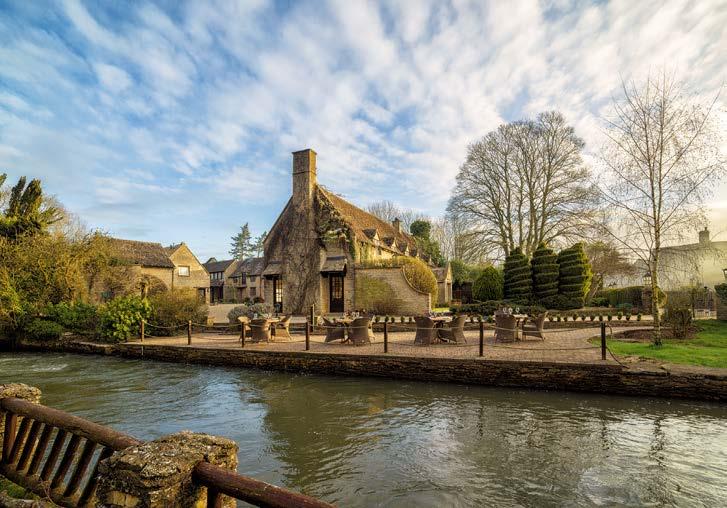
Enter our competition for your chance to win a holiday in Britain for two worth up to £5,000, including free international fl ights
What would your dream holiday to Britain include? A fi ve-star stay in London and tickets to a West End show? A trip to historic Edinburgh? How about a stay in the Cotswolds, including a visit to one of Britain’s fi nest stately homes? Well, with our Great British Holiday competition, you can win all of this and more.
London luxury
Starting with free fl ights (for overseas entrants), the winner and their guest will travel to London for a luxury one-night stay at the Athenaeum, a fi ve-star hotel in the heart of Mayfair – just a short stroll from Buckingham Palace, Piccadilly Circus and the Royal Parks.
Your visit will also include tickets to a top West End show of your choice, with a lavish three-course meal with wine at Prezzo to make your night one to remember.
Historic Edinburgh
Next, our winner and their guest will head to Edinburgh for a stay at the luxury Radisson Collection Edinburgh, located on the famous Royal Mile, with stunning views of the Old Town. During your stay you’ll visit the iconic Edinburgh Castle, followed by a special three-course dinner.
The charming Cotswolds
To conclude your trip, it’s time to escape to the countryside to visit one of Britain’s fi nest stately homes and the birthplace of Winston Churchill: Blenheim Palace.
Accommodation for the night will be at Minster Mill, a glamorous and luxurious hotel on the banks of the River Windrush in the historic village of Minster Lovell.
After a full English breakfast, you can take advantage of the hotel’s top-class facilities – from its spa to its croquet lawn – or explore the idyllic Oxfordshire Cotswolds, home to some of England’s most beautiful villages.



HOW TO ENTER
Go to www.chelseamagazines.
com/GBH2021 or fi ll in the coupon on the right with the answer to the question:



Question: Which famous Brit was born at Blenheim Palace? a) Isaac Newton b) Queen Victoria c) Winston Churchill

IMAGES SHUTTERSTOCK
TERMS AND CONDITIONS
Closing date for entries is 31 July 2021. The winner will be announced on www.theenglishgarden.co.uk on 7 August 2021, and the holiday can be taken between 1 September 2021 and 31 May 2022, subject to availability. For full terms and conditions, go to www.chelseamagazines.com/GBH2021 Two annual tickets to Blenheim Palace, one of the country's fi nest stately homes and the birthplace of Winston Churchill. www.blenheimpalace.com

One-night stay for two at The Athenaeum, a fi vestar hotel in London's Mayfair district, near Buckingham Palace. www.athenaeum hotel.com
One-night stay for two at Minster Mill, a luxurious Cotswolds hotel near Blenheim Palace. Includes breakfast. www.minstermill.co.uk Two-night stay for two including breakfast at the Radisson Collection Edinburgh on the city's Royal Mile. www.radissonhotels.com
Two premium theatre tickets, plus a threecourse meal at Prezzo for two with wine, from Buyagift, the UK’s leading provider of experience days. www.buyagift.co.uk
Visit Edinburgh Castle, the Scottish capital's unmissable historic attraction, followed by a three-course dinner for two from go-to gift experience company Red Letter Days. www. redletterdays.co.uk
SEND YOUR COUPON TO: US readers: Great British Holiday Competition 2021, The English Garden, C/O NPS Media Group, 2 Corporate Drive, Suite 945, Shelton, CT 06484 UK and ROW: Great British Holiday Competition 2021, The English Garden, Jubilee House, 2 Jubilee Place, London, SW3 3TQ, UK
My answer:
Name:
Address:
Postcode:
Tel no:
Email:
Terms and conditions apply. For full details go to chelseamagazines.com/ terms-and-conditions Please tick here if you subscribe to The English Garden ■ Please tick if you are happy to receive relevant information about new products or services from our competition partners via email ■ , post ■ , or phone ■ , and/or The Chelsea Magazine Company via email ■ , post ■ , or phone ■
ASHWOOD NURSERIES


A plantsman’s paradise and an independent nursery situated in the West Midlands. We specialise in Hellebores, Hardy Cyclamen, Salvias, Hepaticas, Lewisias, Hydrangeas, Dwarf Conifers, Snowdrops, Primula auriculas and many more beautiful plants. Our mail order service sends plants, garden essentials and gifts to mainland UK destinations. Please visit our website for up to date information regarding opening times and events. For a free colour brochure, quote ENGGAR21. To celebrate 60 years working in the horticultural industry, last year, in 2020, renowned plant breeder, Peter Moore, gave 25% of his plant royalties to horticultural charity Perennial. One of his more recent introductions is: Choisya White Dazzler ‘Londaz’ AGM. An international award-winning hardy shrub covered in intensely scented white flowers in spring and again in the autumn. Ideal for a large patio pot in full sun or light shade.
Tel: 01384 401996 mailorder@ashwoodnurseries.com | www.ashwoodnurseries.com Ashwood Lower Lane, Kingswinford, West Midlands DY6 0AE
BRED BY PETER MOORE
Photo: Plantipp BV®
www.bredbypetermoore.co.uk for nationwide stockists
WEASDALE NURSERIES

Weasdale Nurseries have been growing hardy trees and shrubs on our site at 850ft elevation in the Howgill Fells, at the heart of beautiful Cumbria, since 1950. Specialising in mail order from the outset, our careful packaging system has become legendary and guarantees safe arrival of the delicate contents anywhere in the UK. Contact us for your free copy of our highly readable, illustrated catalogue, listing over 900 different plants available from November to April. EG04/21.
Tel: 015396 23246 sales@weasdale.com | www.weasdale.com Newbiggin on Lune, Kirkby Stephen, Cumbria CA17 4LX
TREHANE NURSERY

A small, traditional grower based in Dorset, Trehane Nursery has specialised in Camellias and blueberries for more than 60 years, introducing many new Camellias to the British gardener. Today, we grow an unsurpassed range of more than 200 different varieties, from young plants to mature specimens, all of which can be dispatched by courier throughout the UK. For friendly advice, or to order, please contact us by phone, via the website, or call in and visit our peaceful, woodland nursery. OPEN: Monday to Friday (all year) 8.30am to 4.30pm; please check website for weekend opening hours.
DAISY CLOUGH NURSERIES LTD
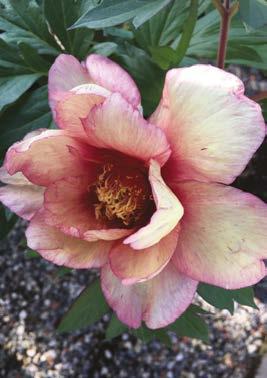
A busy nursery in rural Lancashire, Daisy Clough specialises in a carefully selected range of over 700 perennials and grasses. Open seven days a week, the nursery also offers a good selection of shrubs, trees, container plants and fruit. Plenty of homegrown vegetable plants are available through spring and summer. A full plant list is available to view on our website. Our garden shop sells seeds, tools and essential garden sundries. We have a beautiful homeware and clothing shop, a deli and a tearoom to round off your visit. Covid restrictions apply.
0Tel: 01524 793104 info@daisyclough.com | www.daisyclough.com Station Lane, Scorton, Preston, Lancs PR3 1AN
HEDGING UK

Hedging UK are specialist growers of quality hedging plants. Plants are available to purchase at wholesale prices across the UK through our mail order service. Buy direct from the grower, delivered direct to your door. Readers of The English Garden get a 5% discount (quote TEG2021).
Tel: 01704 827224 or 07789 922457 sales@hedginguk.com | www.hedginguk.com Boundary House Farm, Holmeswood Road, Holmeswood, Lancashire L40 1UA
BLUEBELL ARBORETUM & NURSERY
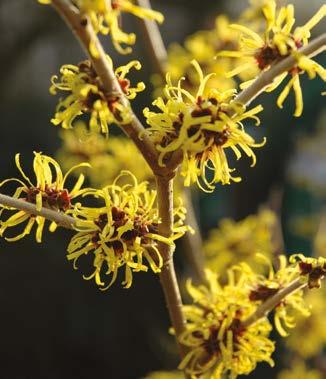
Specialists in hardy trees, shrubs and climbers including a huge selection of unusual and rare species and varieties. Expert advice is available from our helpful staff. The nursery is surrounded by a nine-acre woodland garden (RHS Partner Garden), and visitors are welcome all year round. Informative website and reliable mail order service if you would like plants delivered.
Tel: 01530 413700 sales@bluebellnursery.com | www.bluebellnursery.com Annwell Lane, Smisby, Ashby de la Zouch, Leicestershire LE65 2TA
SPRING REACH NURSERY
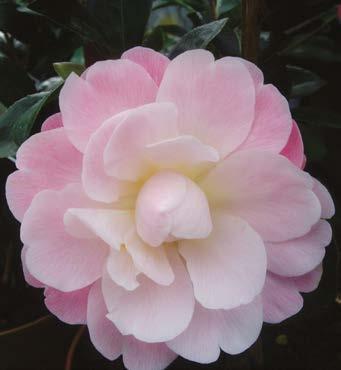
A plant fanatic’s paradise on the edge of the beautiful Surrey Hills, just 10 minutes from the A3/M25. Brilliant home-grown Shrubs, Climbers, Grasses, Perennials, Roses, Ferns, Trees, Hedging and Fruit, plus these spring wonders: pink Chaenomeles ‘Moerloosei’, Exochorda ‘The Bride’, Magnolia ‘Black Tulip’, Magnolia ‘Genie’ and Ribes ‘Elkington’s White’. New season roses and yew hedging now ready.
Tel: 01483 284769 info@springreachnursery.co.uk | www.springreachnursery.co.uk Long Reach, Ockham, Surrey GU23 6PG
TENDERCARE NURSERIES
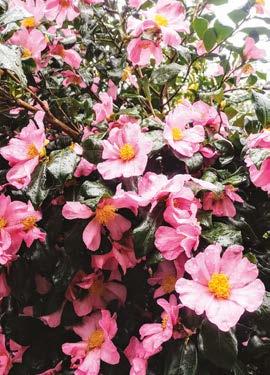
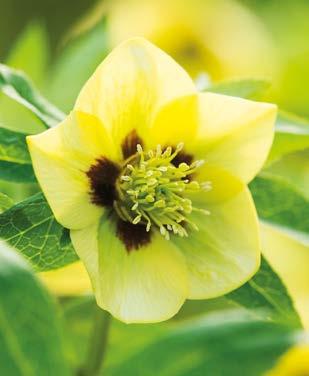
Specialising in more mature and specimen plants, from Hostas to Hamamelis, Tendercare’s 12 acres are a joy to visit for anyone with a garden in the making. Our site visit and warrantied planting service is very popular to help rejuvenate a tired garden or change the focus of the garden after building works. Our award-winning design service will create a beautiful garden for you to enjoy all year through. Book your visit for assistance with one of our horticulturists, by golf buggy, or pop into our office and we can give you a map, a route to follow, and suggestions to get you started.
CERNEY HOUSE GARDENS
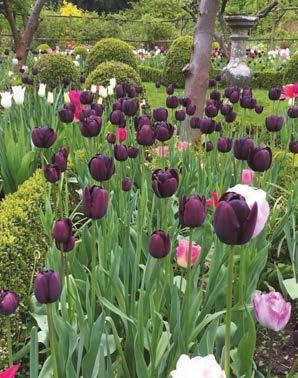
Cerney House garden is a romantic English garden for all seasons. There is a beautiful secluded Victorian walled garden. In March and April we feature a wonderful display of tulips which heralds the arrival of spring with a riot of colour throughout the garden. Explore our new medicinal herb garden. Tea, coffee and homemade cake available. Dogs welcome. New for 2021 Potting Shed shop selling plants. OPEN: Daily from Sat 30 Jan 2021. 10am-7pm (dusk).
Tel: 01285 831300 janet@cerneygardens.com | www.cerneygardens.com North Cerney, Cirencester GL7 7BX
LANGTHORNS PLANTERY
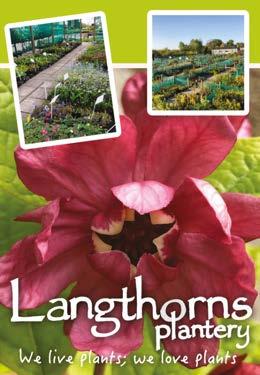
With an eye for the unusual and a vast range of plants of all sizes, the team at Langthorns Plantery are on hand to help you choose the right plants for your gardens. Our collection of more than 5,000 varieties includes ornamental and fruit trees, shrubs, perennials, roses, climbers, bamboos, grasses, herbs and wildflowers. We have plants, you have time, come to our shop, it’s now all online. Browse our collection and treat yourself from the comfort of your home, or visit the Plantery and enjoy some fresh air in the beautiful Essex countryside. OPEN: Every Tuesday to Sunday 9am until 5.30pm.
Tel: 01371 872611 info@langthorns.com | www.langthorns.com High Cross Lane West, Dunmow, Essex CM6 1TD
TWELVE NUNNS
© Clive Nichols At Twelve Nunns we are well known for our Harvington Hellebores® and have many beautiful colours and forms to choose from. They are available to order from our website now, so why not brighten up your winter garden. We also specialise in Trilliums, Erythroniums and Roscoea – all plants that enjoy dappled shade in the garden. Our plants are bred and grown by us in rural Lincolnshire and come carefully packed in our ecofriendly packaging. Visit our website to find out more.
The Whole Hog
The various materials that can be used to surface paths offer different sensory effects. Katherine Swift muses on the pleasures and pitfalls of versatile hoggin
There is more to a path than meets the eye. Paths aren’t just a way of getting around the garden or of enhancing the look of it. The sensation and sound of diff erent sorts of surfaces can be a major factor in establishing the mood of a garden, too – each surface responding with its characteristic crunch or sigh, resistant or yielding to the foot, each with its story to tell.
The paths of my childhood were made with cinders from the hearth, regularly topped up, in the days before central heating. Here at Morville, the old path down to the church still contains chunks of glassy blue slag from the bottom of local furnaces, a product of the limestone fl ux used to purify the iron. Before garden centres and the internet, you used what was to hand. And it’s still a good plan to buy local materials: cheaper to transport and more in harmony with local buildings.
As part of the ongoing renovation of the Canal Garden here, we have recently been relaying the hoggin path. Hoggin is self-binding gravel – a naturally occurring mixture of gravel and clayey sand or marl that sets hard when laid and rolled. It scores over conventional paving or fl agstones in that it is slip-resistant, and it is easier to walk on than loose gravel – very much easier, if pushing a wheelbarrow or using a wheelchair.
Hoggin is also highly aff ordable, and comes with its own foundation, if bought ‘as raised’ (not screened or graded, as is more usual today). You use the larger pebbles as the foundation of the path, then progressively add the smaller sizes of gravel in layers, before laying the ‘fi nes’ (which will make the hoggin’s characteristically smooth, sandy surface) on top. Once rolled and set, hoggin is not porous, so large areas need to be laid with a slight camber to drain excess water away. This may be the origin of its odd name, ‘hogging’ being the present participle of the verb ‘to hog’, meaning ‘to arch’ something.
The word itself did not come into use until the 19th century, but the material and its properties were very familiar to 17th- and 18th-century English gardeners. At that time, all gravel came ‘as raised’, and would have been sourced locally. If you were lucky, your gravel was self-binding. Kensington and Blackheath were two areas of London well known
for the binding qualities of their gravel; when the Privy Garden was being made at Hampton Court in 1701 they had to make do with (non-binding) river gravel dredged from the Thames. Once laid, maintenance is easy. The hard surface repels weeds, and occasional rolling keeps it trim. But no surface is immune to high heels: as 17th-century diarist John Evelyn complained, “I would they were banished all out of our gardens forever” a cry echoed by owners of houses and gardens open to the public today.
Modern versions of hoggin include bound gravels and bonded gravels, both achieved by the use of resin to fi x ordinary washed and graded gravel. They come in a very wide range of colours, and bound gravel has the added advantage of being porous, because the resin is aerated before being mixed into the gravel, making it SuDS (Sustainable Drainage Systems) compliant. But I should miss hoggin with its natural irregularities and the sandy whisper of walking on its surface – not to mention the thought of those 17th-century high heels. ■
